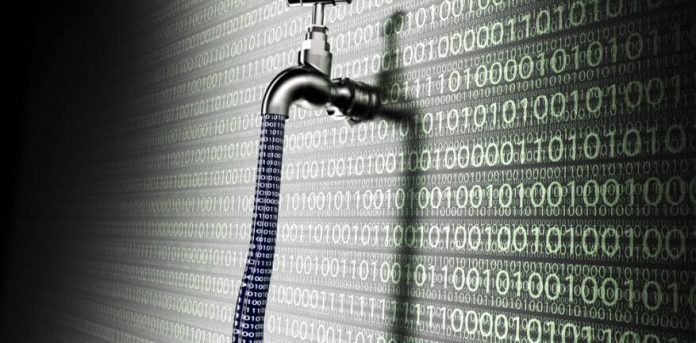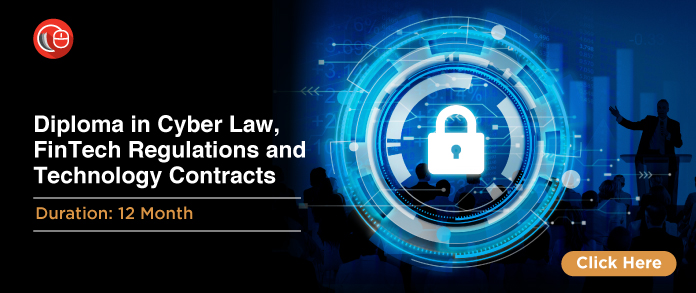This article is written by Khadeeja Zaidi, pursuing a Diploma in Cyber Law, FinTech Regulations and Technology Contracts from LawSikho.
Table of Contents
Introduction
Identity theft can be much more than temporary chaos, which can alter your life’s course. Enterprises, governmental bodies and individuals alike can suffer tremendous difficulties from the data leakage. Fraudsters could access everything through the phone, Wireless, text messages, or even the web services which you use, even if you are offline or online.
A small loophole could cause a major data leak lacking utmost precision.
Though many people do not know how common modern security threats operate, they do not pay adequate attention to them.
We’ll clarify data theft in this blog post and how they can affect you.
You’ll get answers to some commonly asked questions as we dive in:
- What are infringements on data?
- What induces a breach of data?
- How is a data leak impacting me?
- To avoid data leaks, what should I do?
We’ll start with a short description of the data leak before going further.
What is a data breach
Defining data leak: A data leak reveals an alleged infringer to private, sensitive, or secured details. Without approval, the details in a data leak are accessed and/or exchanged.
From people to high-level companies and states, everyone can be at threat of a data leak. Most critically, when they are not secured, someone may put someone else at threat.
Data leak in common occur due to vulnerabilities in:
- Programming
- Conduct of Users
There are plenty more possibilities for data to leak through as our smartphones and tablets gain many interconnected functions. Technological advances are being built quicker than we can cover them.
In the IoT market, devices are evidence that we are increasingly valuing usability over security.
There are many serious flaws in many smart home devices, such as a lack of security, and hackers are taking advantage of them.
We will proceed to witness this issue rise as modern electronic devices; web applications often use limited security testing.
Although some consumers would probably still have weak digital habits even when the underlying technology has been installed perfectly, what it takes for a webpage and network to jeopardise itself is a person.
You are most likely to be in threat without adequate protections both at the individual and business levels.
Protecting yourself and others start by knowing how loss of data happens.
How do data breaches happen
The assumption is that an outside hacker causes a data breach, but that’s not always true.
Often, explanations for how data breaches occur may be traced back to malicious attacks. It can, however, just as easily be the product of basic supervision by individuals or weaknesses in the architecture of an organisation.
Here’s how there could be a data leak:
- An unintended insider: An instance would be an employee accessing a device of a co-worker and accessing documents without obtaining the appropriate permissions for authorisation. Access is accidental, and that there is no sharing of information. However, since the unauthorised person accessed it, the data is assumed to be violated.
- A fraudulent insider: To inflict damage to a person and perhaps corporation, this individual consciously obtains and/or exchanges data. The fraudster may have legal permission to use the information, but the purpose is to have the details in illicit ways.
- Misplaced or robbed appliances: An unsecured and accessible laptop or external hard drive is missing something containing confidential data.
- Dishonest external criminals: Those are all hackers who obtain information from the server or even a person while using different operation strategies.
Malicious methods used to breach data
You must know where to look because fraudulent data theft results through cybercrime.
Below are some standard techniques used by attackers.
- Spamming
- Attacks by Brute Force
- Malicious software
Spamming: These assaults on social engineering are aimed at fooling you into causing a data leak. Spam attackers pose as individuals or organisations you trust to trick you easily. Criminals of this type attempt to coax you into distributing access to confidential data or supplying the information themselves.
Brute force attacks: Hackers might recruit software applications to estimate their credentials in an even more aggressive approach.
Brute force attacks operate through all your login credentials alternatives till they guess correctly. Such attacks take some time, however as desktop frequencies start to grow, they are becoming effective. To accelerate the process, attackers even invade other gadgets like yours through malicious software. This may require just a few moments to hack your credentials if it is simple.
Malicious software: A database engine of your computer, applications, equipment, or even the communications system as well as networks where you’re associated may have security breaches. Criminals search out these security holes as the ideal place to drive malware into them. Spyware is specifically suitable for stealing private information while remaining fully undetected. The outbreak could not be noticed until it is out of control.
What is targeted in data breaches
While a data leak may be the outcome of an accidental error, if the person with unauthorised access hacks and sells Personal Identifying Information (PII) or corporate intellectual data for monetary gain or to inflict damage, real harm is almost inevitable.
Malicious offenders typically follow a basic structure: it requires effort to target an organisation for a violation. To know where the security flaws are such as insufficient or unsuccessful upgrades and employee vulnerability to credential theft, they study their victims.
Fraudsters study the weaknesses of a target, and after that, create a strategy to get insiders to access bugs accidentally. They go for direct action often.
When inside, malicious hackers could look for the information they need and a considerable amount of time to do as it requires more than five months to identify the normal breach.
Below are the prominent flaws to avoid so as to guard against being targeted by malicious criminals:
Inadequate credentials: Compromised and weak credentials trigger the large proportion of data breach. If malicious hackers have a variation of your login credentials, they will have an open door to your network. Spammers may use brute force attacks to gain access to email, webpages, banking information, and other forms of PII or financial data because most users reuse credentials.
Looted credentials: Spam breaches are a big security concern because if cybercriminals take hold of such personally identifiable information, they can use it to access items such as your bank and online accounts.
Corrupted assets: To negate standard authentication measures that would normally secure a device, multiple malicious assaults are used.
Bank card scam: Whenever a card is swiped, card scanners connect it to petrol stations and sometimes ATMs to access confidential details.
Third-party control: While you can make any attempt to maintain your server and information secure, third-party vendors can also be used by manipulative offenders to find their way into your device.
Mobile platforms: When workers are permitted to carry their own devices (BYOD) into the office, installing malicious software apps that offer hackers details stored on the computer is simple for unprotected devices. That also involves work emails and files as well as the PII of the owner.
The harm that a data leak would do
In certain instances, with some password change, fraudulent activities will not only be covered up. A permanent problem for your image, finances, and much more could be the consequences of a data breach.
To corporate organisations: a data leak can have a damaging impact on the credibility and financial bottom line of a company. The survivors of a data leak, for instance, were companies such as Equifax, Target, and Yahoo. And today, more individuals associate/remember such businesses with the occurrence of the data breach itself rather than their actual corporate practices.
For governmental bodies: leaked data may mean exposing external parties with confidential information. Military activities, political relations, and information on vital national infrastructure can pose a major threat to people and the government.
For people: identity fraud is a big concern to survivors of data breaches. Through confidential information of bank account details, data breaches can disclose anything. When a criminal has this information, using your identity, they will indulge in all forms of fraud. Identity fraud will destroy your credibility, trap you down with legal problems, and it’s difficult to combat back.
While these are common causes, the harm done by data breaches can extend far beyond these situations. So, it would be best if you investigate whether your data has already been exposed.
To stop becoming a victim in the very first place, especially, is perhaps the best way to defend oneself. No safety plan is ideal, but whether you’re a person or even an organisation, there are many methods you can protect oneself.
How to stop becoming a target of data leak
Data leak mitigation needs to include everyone from end-users to IT staff, and then all individuals under at all levels.
Safety is about as good as its weakest connection whenever you’re gearing up how and when to stop data leak threats or leaks. A possible weakness can be any person who communicates with a system. Even young children on your home network with just a device could be a threat.
To prevent a data leak, below are the few effective strategies:
- Software reconfiguring and upgrading, as soon as alternatives are available.
- For confidential data, high-grade authentication.
- Updating equipment when the producer no longer funds the technology.
- Implementing BYOD security measures, such as allowing a corporate VPN provider as well as virus protection software to be used by all users.
- To implement best overall cybersecurity practises, implement complex passwords and multi-factor encryption. It can be helpful to motivate customers to start using only a unique password.
- Educating workers on best safety practises and ways to deter assaults that are socially engineered.
Students of Lawsikho courses regularly produce writing assignments and work on practical exercises as a part of their coursework and develop themselves in real-life practical skill.
LawSikho has created a telegram group for exchanging legal knowledge, referrals and various opportunities. You can click on this link and join:












